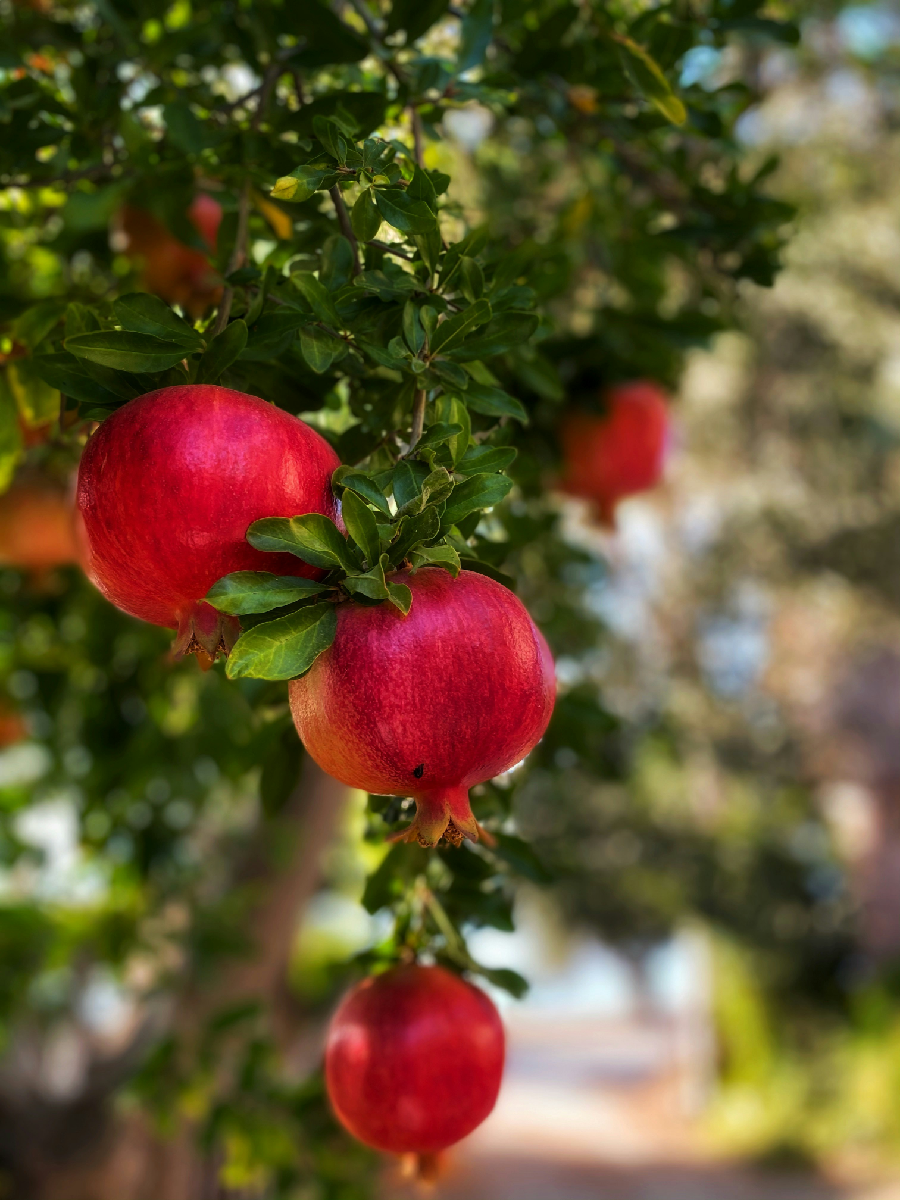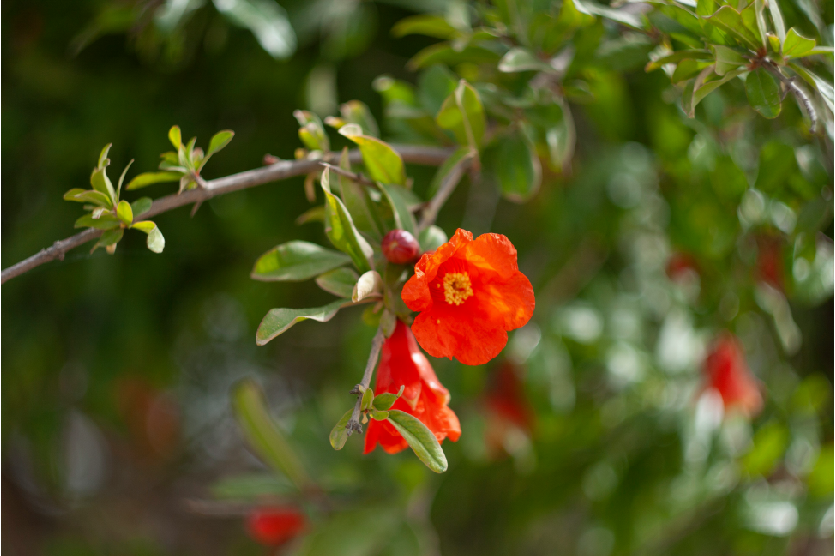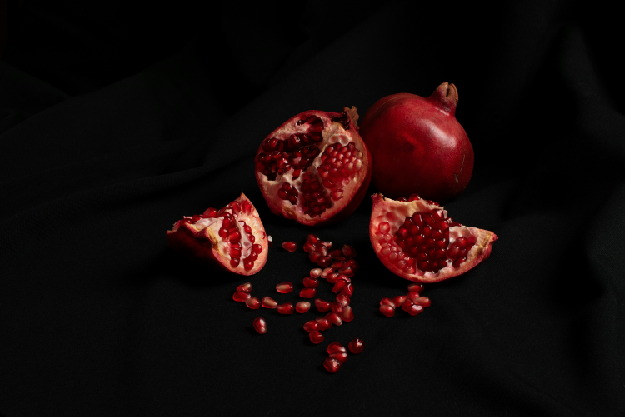Pomegranates: 5,000 Years of Taste and Beauty

Pomegranate tree (Zeynep Açıktepe – unsplash)
By Kim Schultz, UCCE Master Gardener of San Diego County
(This article originally appeared in the September/October issue of California Gardens)
For thousands of years, pomegranates have been symbols of abundance, fertility, and beauty in societies around the world. Pomegranates have been found buried in ancient Egyptian tombs, carved into the walls of Persepolis, and sunken in a Turkish shipwreck. Eating pomegranate seeds granted a hero immortality in Persian mythology and condemned a goddess’ daughter to spend months in the underworld in Greek mythology. People have enjoyed and cultivated pomegranates for 5,000 years, and it only takes one taste to realize why.

The bright red-orange pomegranate blooms that appear throughout the summer attract pollinators such as bees and hummingbirds. Photo by Ksenia Philippova on Unsplash.
Pomegranates, Punica granatum, originated in Persia (present day Iran), and were brought to present day California with Spanish missionaries in 1769. Their name comes from the Latin pomum granatum for “apple of many seeds.” Pomegranates thrive in dry Mediterranean climates like San Diego and do well in containers, borders, or as hedge plantings as long as they have full sun, regular moisture, and well-draining, non-alkaline soil. These deciduous shrubs or small trees are drought tolerant, gracefully drooping plants for the landscape, reaching from 6 to 20 feet (2 to 6 meters) high. Their pointed leaves emerge from multiple spiny branches as a bronze color in spring, then turn a bright or golden green for the summer before becoming a brilliant yellow in the fall. They cannot survive temperatures below 10°F, but most varieties require 200-300 chill hours (cumulative hours during temperatures below 45°F) to set fruit.

Pomegranates are beautiful inside and out, containing as many as 1,300 arils each. Photo Credit - Margarita Zueva on Unsplash
While ornamental pomegranates have larger, showier single or double trumpet-shaped flowers in shades from red, orange, and pink, to red and white, the smaller red and red-orange blooms of edible pomegranates give way to the fruit, which ripens between August and November. The leathery outer skin contains up to 1,300 tasty arils within; an aril is an outgrowth of a seed that completely encompasses the seed. The arils can range in color from ruby-red to clear. Different varieties offer different balances of sweetness and tartness; there is a pomegranate for every palate.
Pomegranates are versatile in the kitchen. They are high in antioxidants, potassium, and vitamin C, and can be eaten raw or cooked in both sweet and savory dishes. Pomegranates are featured in cuisines around the globe: Greek, Indian, Middle Eastern, Pakistani, and Spanish. Many methods abound to extract arils beyond simply picking them out by hand. Quarter the fruit vertically, submerge the sections in water, and nudge the arils out with fingers. Alternately, cut the fruit in half horizontally, hold a half cut-side down over a bowl, and whack the fruit vigorously with a large spoon until the arils fall out.
Pomegranate plants are low risk for diseases and pests. Leaf-footed bugs and vine mealybugs can affect the appearance of leaves and fruit but are not threatening to the life of the plant, so check the undersides of leaves for infestations and remove overwintering sites like fallen leaves and piles of logs. Checking leaf undersides will also alert you to whitefly and cotton aphid infestations; both in small numbers can be sprayed off the plant with water or treated with natural enemies. Pomegranates can also be affected by Armillaria root rot (oak root fungus) and Botrytis blight (gray mold). The most common complaint is fruit splitting, which is most likely caused by irregular irrigation patterns and heavy rains.
To join 5,000 years’ worth of pomegranate growers, pick up a pomegranate plant at most nurseries or during bare-root fruit tree season. Some varieties highly recommended for San Diego County are Angel Red, Desertnyi, Eversweet, Golden Globe, Parfianka, Sirenevyi, Wonderful, Pink Satin, and Utah Sweet.
Kim Schultz is Master Gardener from the class of 2023 and past president of the Southern California Plumeria Society; she enjoys the fruit and beauty of her Parfianka pomegranate.

